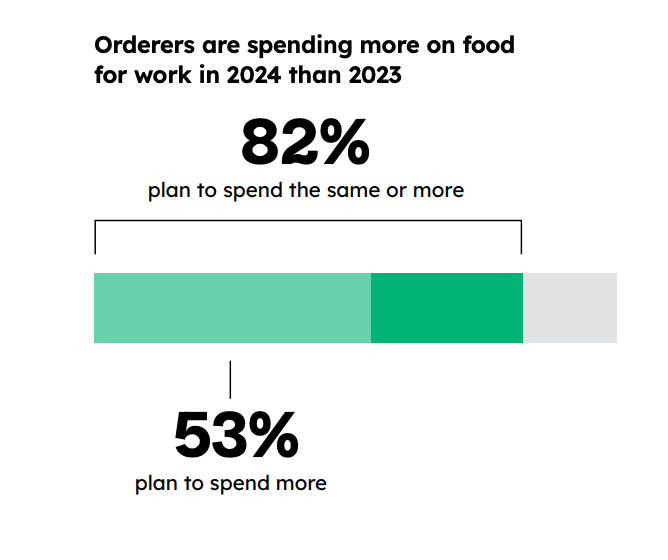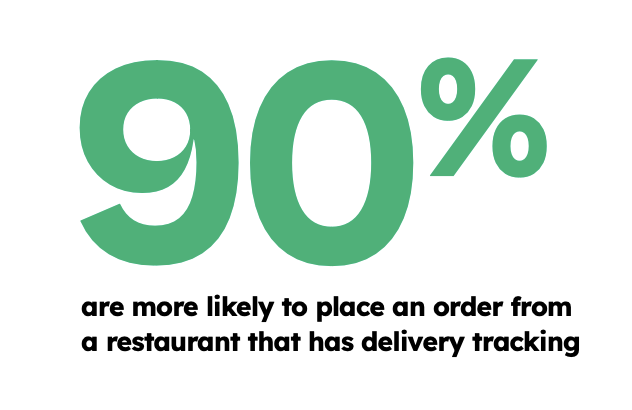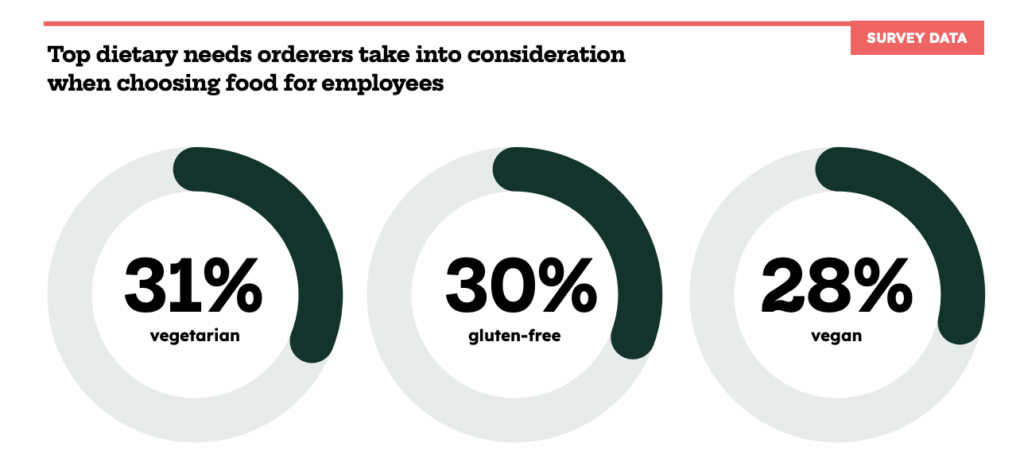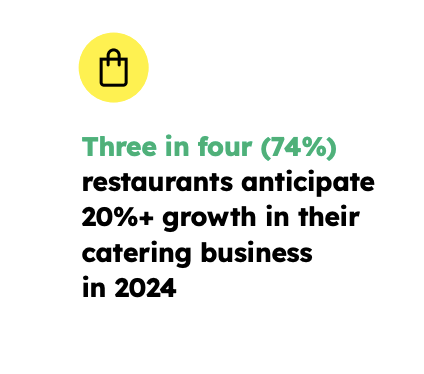As companies continue to require more on-site presence from their employees, workplace catering is on the rise — and so are the budgets to match. Want to get in on this growing catering trend? This on-demand webinar has a few insider tips.
ezCater’s David Meiselman took the stage at the Food on Demand conference this year to share key insights from ezCater’s 2024 Feeding the Workplace report. He also sat down with Jeff Drake, CEO of Protein Bar & Kitchen, for a candid conversation about catering growth strategies.
Catch up on all the details at your own pace with our on-demand webinar, Unlocking the Power of Food for Work Insights. Here are a few highlights, complete with timestamps so you can jump directly to what matters most to you.
Key takeaways from David Meiselman’s keynote
Don’t sweat it if you couldn’t make it to David Meiselman’s keynote at the Food on Demand Catering Growth Forum. The first 20 minutes of the webinar focus on his remarks, which explore emerging trends from ezCater’s 2024 Feeding the Workplace report.
Let’s dig in.
1. Companies are spending more on food for the workplace

ezCater’s Feeding the Workplace Report highlights how food is often used as a business tool. In his keynote, David shares that in the world of flexible working schedules and hybrid environments, food perks remain a key driver of employee attendance and engagement:
- 53% of companies plan to increase their food budgets in 2024, recognizing it as a great investment.
- 88% of decision-makers say food perks encourage employees to work in the office more often.
- 52% of employees rank food higher than many other workplace perks.
[timestamp: 4:05]
2. Mobile ordering and delivery tracking are must-haves for operators who want to grow their business

As workplaces get more flexible, mobile ordering and tracking are must-haves for restaurant operators. David shares that ezCater data reinforces this sentiment:
- 67% more orderers are using mobile devices this year, especially employees who aren’t at a desk all day.
- 97% of customers want real-time tracking, which reduces service calls and saves operators time.
- 90% are more likely to order when tracking updates are available.
[timestamp: 6:41]
3. Packaging, group ordering, and dietary preferences matter to orderers

David highlights more than just mobile ordering preferences — today’s customers also want menus that can flex to meet dietary needs and diverse ordering preferences:
- Demand is rising for dietary options like vegetarian (31%), vegan (28%), and gluten-free (30%).
- 64% of employees prefer individual packaging, like boxed lunches, over shared trays.
- Group ordering capabilities are the most helpful in lightening the load on organizers.
[timestamp: 9:13]
4. The three areas operators should invest in for maximum catering business growth

If you’re part of the 97% of restaurant operators that expect revenue from catering to grow this coming year, David suggests these strategic investments to scale your operations:
- Optimize processes by employing catering management software, checklists, and clear labeling for allergens and dietary needs.
- Improve delivery by adding tracking and services like on-site setup to meet client expectations for large events.
- Expand menu options for increased flexibility, and implement group ordering capabilities.
[timestamp: 13:59]
Key takeaways from David and Jeff’s discussion
Looking for insider secrets to grow your business? Head to the last 40 minutes of the webinar, where David sits down with Jeff Drake to break down the lessons Jeff learned from his early days at Corner Bakery Café to his current role as CEO of Protein Bar & Kitchen.
Here are four insights you won’t want to miss.
1. How can catering help grow a restaurant’s customer base beyond the food-for-work experience?
David’s data and Jeff’s first-hand experience have proven that catering can be a powerful means to reach new diners outside of office events:
- Catering can create a “flywheel effect” by introducing new customers to the brand, who then visit on their own time.
- 47% of employees who try a restaurant’s food at work become regular customers.
[timestamp: 17:14]
2. How should restaurants be investing in this market?
Jeff sees catering as a whole new way for restaurants to grow — different from regular service but just as impactful:
- Catering only works when company leaders are fully on board and ready to commit. It takes buy-in from the top to set a strong direction and get everyone on the team excited.
- Catering can act like an extra restaurant location without the cost of opening new doors.
- From employee training to menu planning and dedicated catering staff, every part of the plan counts.
[timestamp: 20:57]
3. How to address the high-stakes nature of business catering and why reliability is crucial for success?
High-stakes business events have high expectations. So much so, that a late or incomplete order can have serious consequences. Jeff says that in business catering, being on time often means arriving early — at least 15 minutes early:
- Keep clients informed at every stage, prioritizing punctuality, delivery tracking, and consistent quality to build trust.
- Small details — such as uniforms worn by delivery personnel — convey reliability, assuring clients that their order is in capable hands.
- Follow up regularly with each client after deliveries to reinforce this reliability and find issues early.
[timestamp: 22:49]
4. Advice for brands getting started with their catering business?
When it comes to catering business growth, building relationships with repeat clients and offering personalized support is the place to start. Jeff suggests using these tips to get your catering program off the ground:
- Start small with a core catering menu that’s easy to deliver and fits well with your brand.
- Use affordable branded packaging, like custom napkins — it can help make a positive impression without high upfront costs.
- Set up clear processes and train your team for consistent results.
[timestamp: 28:42]
See how catering is worth the investment in 2024 and beyond
Catering can take your business to the next level, helping to capitalize on the growing workplace food market. By focusing on growth strategies like reliable timing, well-planned menus, and a team that knows the ropes, your restaurant can build a catering program that’s set to scale.
To get more ideas from Jeff’s hands-on experience with catering, plus David’s leading industry insights, watch the on-demand webinar here — it’s packed with tips you can use right away.








